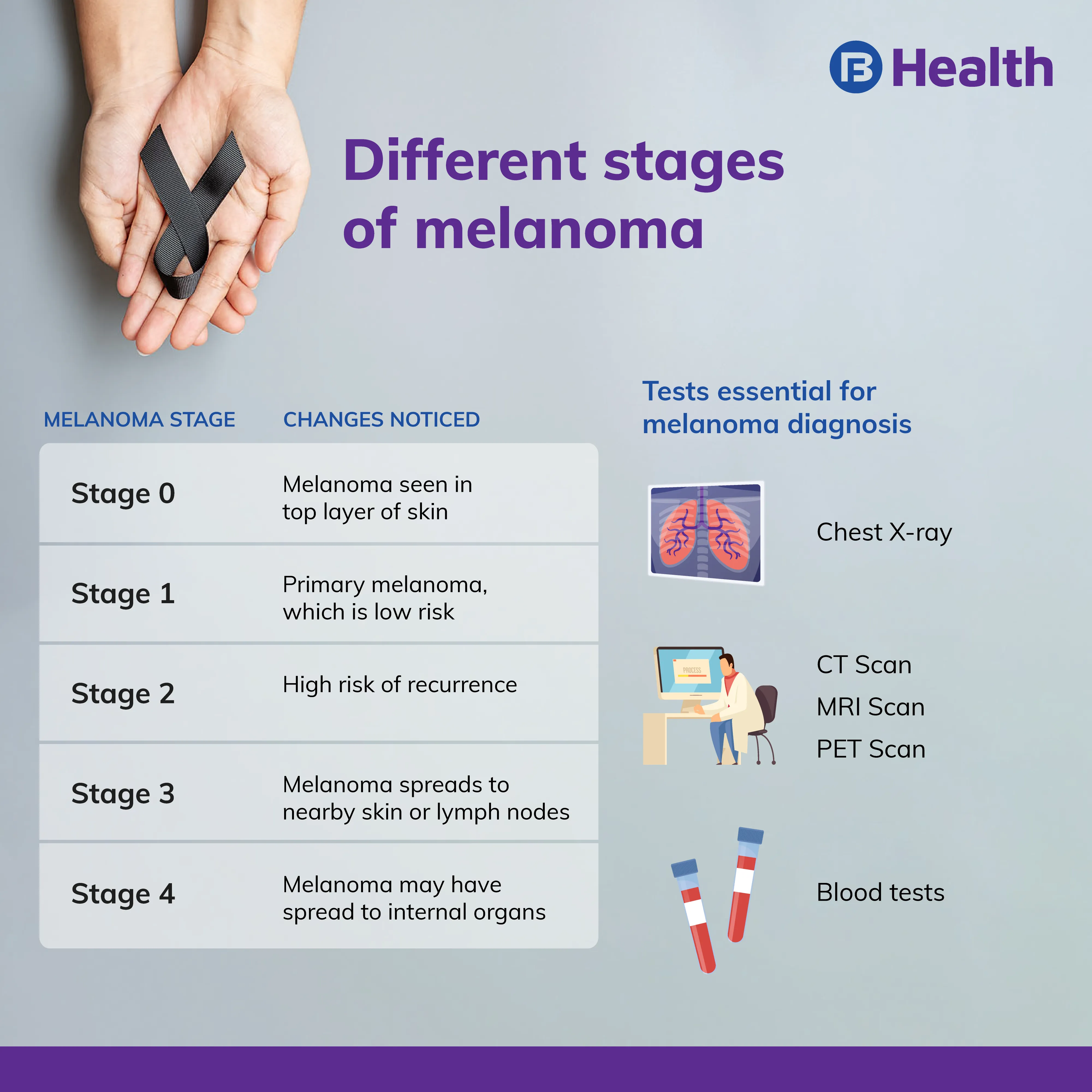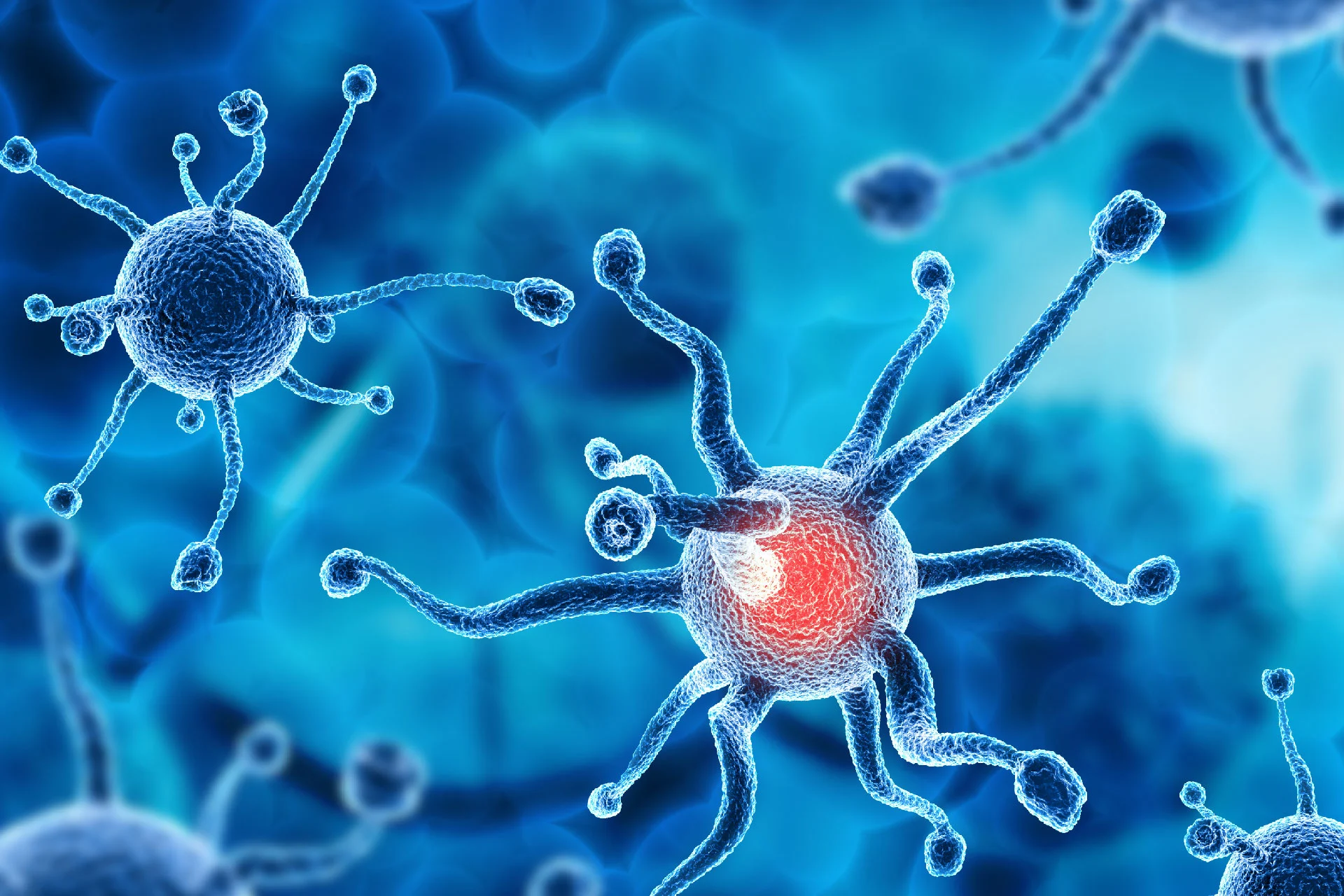Cancer | 5 min read
A Guide on Melanoma Skin Cancer: What are the Symptoms and Causes?
Medically reviewed by
Table of Content
Key Takeaways
- Melanoma skin cancer affects melanocyte skin cells of the body
- Exposure to excess UV radiation is one of the melanoma skin cancer causes
- Reduce risk of melanoma skin cancer by avoiding sun exposure at peak hours
Melanoma is a type of skin cancer that occurs when the melanocyte skin cells function abnormally. This type of cancer and this condition occurs prominently on those areas of the skin that are exposed to the sun. However, melanoma skin cancer may occur on less exposed areas as well. This type is the most serious one and is most common in women under the age of 40.
To know more about melanoma and how to identify suspicious changes in skin for timely treatment, read on.

Melanoma skin cancer causes
Melanoma occurs when there is some problem in melanocytes. When the DNA of cells gets damaged, there is a possibility of new cells growing in an uncontrolled manner leading to the formation of a lumpy mass of cancerous cells. One of the major risk factors of melanoma is excessive exposure to sunlight. Though other genetic and environmental factors may be linked to melanoma, exposure to UV radiation either from sun or tanning lamps tops the list of melanoma skin cancer causes.
Do note that exposure to UV light alone isn’t responsible for causing this cancer. It can appear on your feet or other areas in the body not exposed to this type of light. UV light is simply one of the top causes to be wary of.
Symptoms of melanoma cancer
It is possible to develop melanoma anywhere on your body but the most common areas include your face, arms, and back. These areas are more exposed to sun as compared to others. Normally, you can see moles having a uniform color and a distinctive border separating it from your skin. When you notice changes in the existing mole or see the presence of new pigmented growth on your skin, consult a doctor to rule out any possibilities of melanoma.
There are certain characteristics to look out for in unusual moles that may indicate skin cancer. Use the ‘ABCDE’ acronym to better identify early melanoma signs and symptoms. Here is a quick guide to follow.
A: Indicates asymmetrical shape
B: Stands for irregular border
C: Denotes changes in mole color
D: Determines the diameter of mole
E: Stands for evolving, which means you need to aware of any changes in moles
Not all melanomas fit under this rule, but you can alert your doctor about any unusual changes you can see on the skin for a prolonged period. Another criterion to check out if you have melanoma skin cancer symptoms is to follow the ‘ugly duckling’ sign. If a mole looks different from others, consult a dermatologist immediately.

Risk factors associated with melanoma skin cancer
There are many factors that may increase your melanoma skin cancer risks. One among them is having a light, fair skin tone. This means that there is a lesser amount of the melanin pigment and so the skin isn’t as protected from UV radiations. Other risk factors include the following.
- Presence of several sunburns in your skin
- Increased exposure to UV lights from artificial tanning
- Presence of many unusual moles on the body
- Having a weak immune system
- Having a family history of melanoma
How to prevent melanoma skin cancer
You can minimize the risk of melanoma by avoiding the sun when it is at its brightest. Typically, this is around noon and can extend up to 4PM in some places. If you must be in the sun, use a sunscreen lotion with SPF of at least 30 in order to protect you from harmful ultraviolet rays. Use sunglasses and look for clothing that can offer protection to your skin during these hours. The best way to prevent exposure is to avoid tanning beds or lamps. UV exposure of this kind, over a long period of time, increases risk of cancer.
Additional Read: Want Glowing Skin and Flowing Hair? Here are the Best Summer Tips to Follow!
Melanoma treatment
After getting an accurate melanoma diagnosis, the treatment depends on which stage the melanoma is at and the health of the patient. The main melanoma treatment method is surgery, in which the affected melanocytes are cut along with some normal skin around it. Other methods include the following.
- Radiation therapy
- Chemotherapy
- Lymphadenectomy
- Immunotherapy
Keep in mind that this skin cancer can be cured if detected early enough. Your recovery becomes easier if the cancerous cells are removed from your body in time. If you notice any unusual changes in your skin, connect with an oncologist near you on Bajaj Finserv Health. Learn about the treatment options by consulting the health library, and access deals and health plans from partner clinics too. Book an online doctor appointment and schedule virtual consults, all in just a few minutes.
References
- https://www.cancer.gov/types/skin/moles-fact-sheet
- https://www.mdpi.com/1422-0067/14/6/12222
- https://my.clevelandclinic.org/health/diseases/14391-melanoma
- https://www.cancer.gov/types/skin/research
Disclaimer
Please note that this article is solely meant for informational purposes and Bajaj Finserv Health Limited (“BFHL”) does not shoulder any responsibility of the views/advice/information expressed/given by the writer/reviewer/originator. This article should not be considered as a substitute for any medical advice, diagnosis or treatment. Always consult with your trusted physician/qualified healthcare professional to evaluate your medical condition. The above article has been reviewed by a qualified doctor and BFHL is not responsible for any damages for any information or services provided by any third party.





